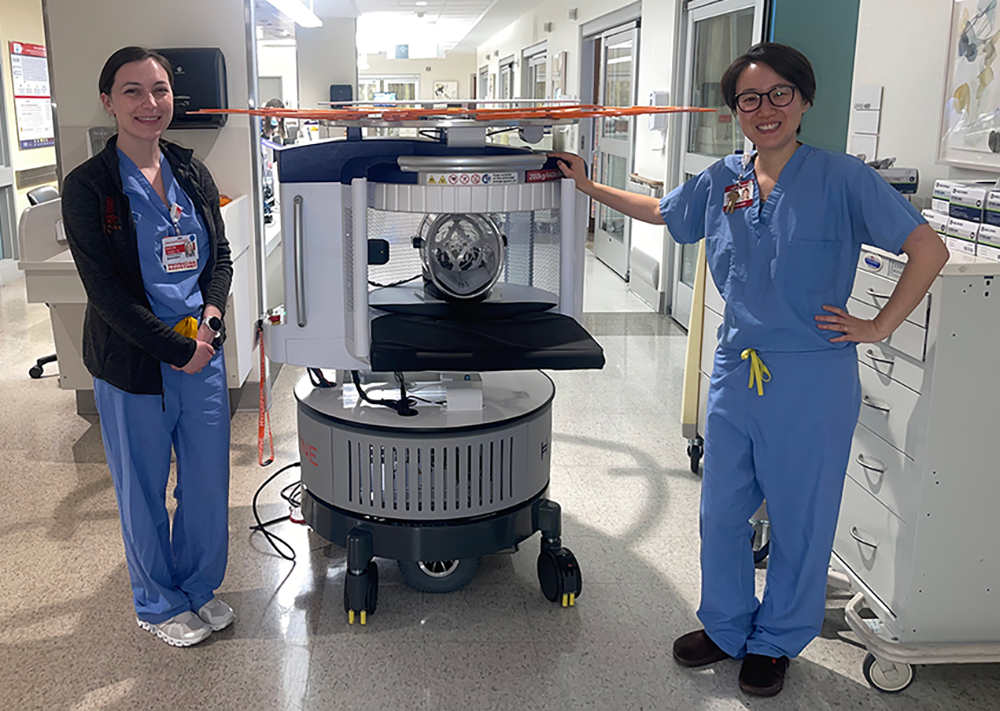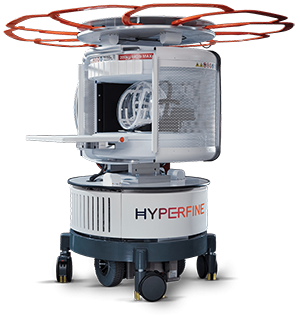
A portable MRI scanner is now up and running in the neuro ICU at NewYork-Presbyterian/Weill Cornell Medical Center, the first of its kind available to patients in New York City. The portable unit allows our team to perform scans right at a patient’s bedside, without having to schedule time in imaging or losing time precious time in transport. In just its first two weeks of operation, the machine has helped in the diagnosis and management of several seriously ill patients, reducing the time required to procure and evaluate scans and changing the course of treatment.
“This is groundbreaking technology, and the first of its kind in New York City,” says Judy Ch’ang, MD, medical director of the Neurosciences Intensive Care Unit on 2 South. “Using a portable scanner allows us to evaluate and monitor critically ill patients without having to move them — we are able to look for signs of stroke or brain injury, and identify other issues, right at the bedside.”

Courtesy Hyperfine
Moving patients from the ICU to an imaging department and back requires a skilled team for the transport, since many of these patients require multiple means of support, from intravenous medication to mechanical ventilation. The process may also pull personnel from the unit to accompany patients being transported. Having a mobile MRI scanner right in the ICU allows the unit to remain fully staffed, reduces risk to patients, and makes imaging available to patients too unstable to move.
Conventional magnetic resonance imaging (MRI) scanners require radiofrequency shielding to prevent interference from other nearby magnetic fields, and must be operated by dedicated technicians. The portable scanner uses ultra-low-field magnetic resonance and does not require shielding. It can be plugged into a standard wall outlet, and its simplified design means it can be operated by a wider range of hospital personnel.
“This is a significant advance in patient care,” says Philip E. Stieg, PhD, MD, chair and neurosurgeon-in-chief of NewYork-Presbyterian/Weill Cornell Medical Center. “We can get MRI imaging without moving the patient from the bed, and we can evaluate unstable patients quickly and get rapid inpatient imaging.”